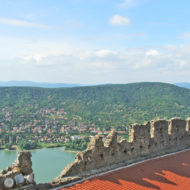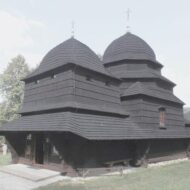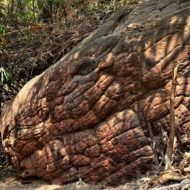Petrovaradin Fortress nicknamed “Gibraltar on/of the Danube” is a fortress in the town of Petrovaradin, itself part of the City of Novi Sad, Serbia. It is located on the right bank of the Danube river.
The cornerstone of the present-day southern part of the fortress was laid on 18 October 1692 by Charles Eugene de Croy. Petrovaradin Fortress has many underground tunnels as well as 16 km of uncollapsed underground countermine system. In 1991 Petrovaradin Fortress was added to Spatial Cultural-Historical Units of Great Importance list, and it is protected by the Republic of Serbia.
History : Recent archeological discoveries have offered a new perspective not only on the history of Petrovaradin, but on the entire region. At the Upper Fortress, the remains of an earlier Paleolithic settlement dating from 19,000 to 15,000 BC has been discovered. With this new development it has been established that there has been a continuous settlement at this site from the Paleolithic age to the present. During the excavations carried out in 2005, archeologists also discovered another significant find. Examining remains from the early Bronze age (c. 3000 BC), ramparts were discovered which testify that already at that time a fortified settlement existed at the Petrovaradin site. The first larger fortifications were created with the arrival of the Romans who built the fortress (Cusum) which was a part of the fortified borders (Limes) along the Danube.
The turning point in the history of the area came in 1235 AD when King Bela IV of Hungary brought a group of the Order of Cistercians from France. This order of monks built the monastery Belakut upon the remains of the Roman fortress of Cusum. The walls of this monastery were built between 1247 and 1252 and represent the fortifications at this site during the Middle Ages. The fortress was strengthened due to the threat of Turkish invasion. However the fortress fell after a two-week siege in 1526.
Austrian-Turkish wars The Austrian Army captured Petrovaradin after 150 years of Turkish control during the Great Turkish War in 1687. The Austrians began to tear down the old fortress and build new fortifications according to contemporary standards. In 1692, the Hofkriegsrath ordered engineers to Petrovaradin to investigate the area in order to build a new fortress. Count Keysersfeld received both financial and personnel support.
The first plans for the fortress were designed by the engineer Colonel Count Mathias Keyserfeld, and afterwards by Count Luigi Ferdinando Marsigli (1659–1730). The works in the field were led by the engineer Colonel Michael Wamberg who died in 1703 and was buried in the church of the Franciscan monastery which today serves as part of the present day military hospital. On September 9, 1694, the Grand Vizier Surmeli Ali Pasa arrived at Petrovaradin Fortress from Belgrade. A siege of 23 days was laid on, however poor weather conditions in October forced the Turkish forces to retreat towards Belgrade with their task left unfinished. The victory of the Austrians under the command of Prince Eugene of Savoy at Senta on September 11, 1697 resulted in creating the conditions for the conclusion of the peace at Karlowitz in 1699.
A new war with the Turks was imminent. The Austrian lack of interest in war, plus the war reparations suggested by the Austrians to the Turks in the interest of the Venetian Republic all served as reasons for the renewal of Turkish aggression towards Austria. In order to prepare for the upcoming battle, Prince Savoy ordered the concentration of Austrian troops around Futog under the temporary command of Count Johann Palffy. Prince Eugene arrived personally on July 9. The entire Austrian army numbered 76,000 troops. In the meantime, the Turkish army concentrated 150,000 troops at Belgrade. The decisive battle between the Austrian and Turkish armies took place on August 5, 1716 at Petrovaradin. The Austrians were led by Prince Eugene and the Turks were under the command of Grand Vizier Silahdar Damat Ali Pasha. The victory of the Austrian army signaled the end of the Turkish threat to central Europe.
Clock Tower : The minute and hour hand on the clock tower are reversed, with the small hand showing minutes, and the big hand showing hours. It was created as such so that fishermen on the Danube river can see the time from a long distance. The “Reversed clock” as it is known, is one of the landmarks of Petrovaradin fortress.
Events : EXIT festival is an annual summer music festival that has been held at the fortress since its inception in 2001. Since then, it has grown from the biggest festival in South-Eastern Europe, to one of the biggest in Europe. Sex Pistols, Nightwish, Garbage, Goldfrapp, Fatboy Slim, Franz Ferdinand, Morrissey, Billy Idol, Pet Shop Boys, The Cardigans, HIM, Robert Plant, Guns N’ Roses, The Prodigy, Beastie Boys, Lauryn Hill, Basement Jaxx, Snoop Dogg, Wu-Tang Clan are just a few names that have performed at EXIT festival.
Info : Petrovaradin Fortress is walkable from the center of Novi Sad, but if you prefer public transportation, bus number 3 is best. Novi Sad itself is about 80 kilometers from Belgrade and buses run often between the two cities. The fortress is also included on many day tours from Belgrade to Novi Sad. Address: 4 Petrovaradin Fortress, Novi Sad, Serbia
Hours: 9:00 a.m. to 5:00 p.m. Tuesday to Sunday, closed Mondays. Admission: Varies















